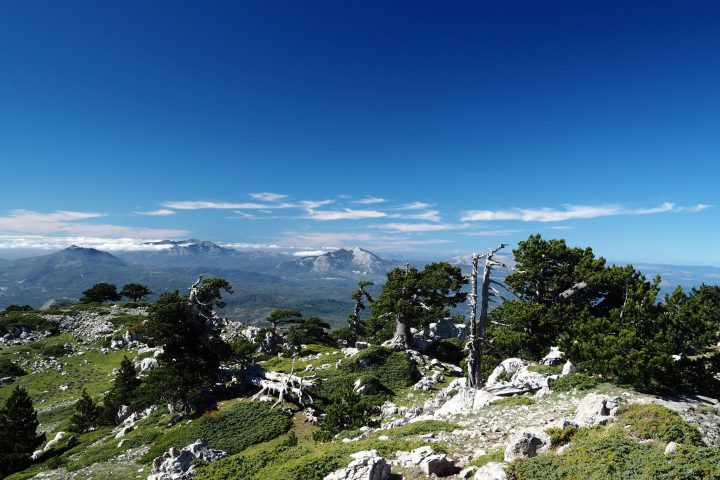The oldest tree in Europe & how it can help in climate change

Folded with a kiss: Sensuous origami artworks
November 2, 2022
The poetry of Dorothy Parker
November 14, 2022
In 2018, researchers discovered a craggy pine tree growing high in the mountains of Pollino National Park in Southern Italy. Using a combination of techniques they discovered the tree was likely some 1,230 years old – and researchers hope that its longevity could serve in our understanding of the effects of climate change.
The Pollino National Park extends from the Tyrrhenian Sea to the Ionian Sea, covering an area of almost 200,000 hectares and is protected by UNESCO. Located between Basilicata and Calabria, its mountain range is part of the southern Apennines and boasts the highest peaks in southern Italy, some 2,200 metres above sea level.
The natural area consists of dolomitic rocks, limestone ramparts, deep gorges, and high-altitude meadows. The Loricato Pine has become a symbol of the park: a “living fossil” or “dinosaur of the trees”.
Discovering Europe’s oldest tree
The 1,230-year-old tree was discovered by a team of researchers led by Gianluca Piovesan from the University of Tuscia. The elderly Heldreich’s pine was growing on a steep, rocky slope on a high mountainside.
This, in part, explains the tree’s longevity: this type of tree is able to resist and thrive in difficult environments, at altitudes above 1,000 metres, and in isolated areas, where other types of trees cannot survive.
The researchers found several other trees thought to be over 1,000 years old as well as others thought to be around 600 to 700 years old in the same location.
Determining the age of the ancient pine tree
Determining the age of the ancient pine in Pollino National Park was not easy, however. The central part of the tree, which would have contained its most ancient rings, was missing.
Instead of simply counting the rings, the researchers had to employ a number of techniques in parallel to ascertain the tree’s likely age. This included carbon dating the roots of the tree and comparing the rings of the roots with the rings in the trunk.
“By joining the two methods, we were able to establish the time frame much more precisely,” explained Piovesan.
What can the ancient pine tell us about withstanding climate change?
The tree is so old that when it germinated it would have been Medieval times, a period of cold. Since then, it has lived through much warmer climates, including years of drought. Researchers hope that, by studying the tree’s ability to withstand these changing environmental conditions, it might teach us something about the resilience our forests will need in the forthcoming years.
Maxime Cailleret from the Swiss Institute for Forest, Snow and Landscape Research, who studies tree mortality, told National Geographic, “Studying multi-centennial trees is highly valuable to better predict the future impact of climate change on forest ecosystems.”
The study team hopes to better understand how forests might respond to modern climate change.
What now?
- Read more about the way in which forests are helping the world to meet the challenges of climate change.
- Discover other impressive trees in Europe.
- Or read about the oldest known tree in the world, here.



